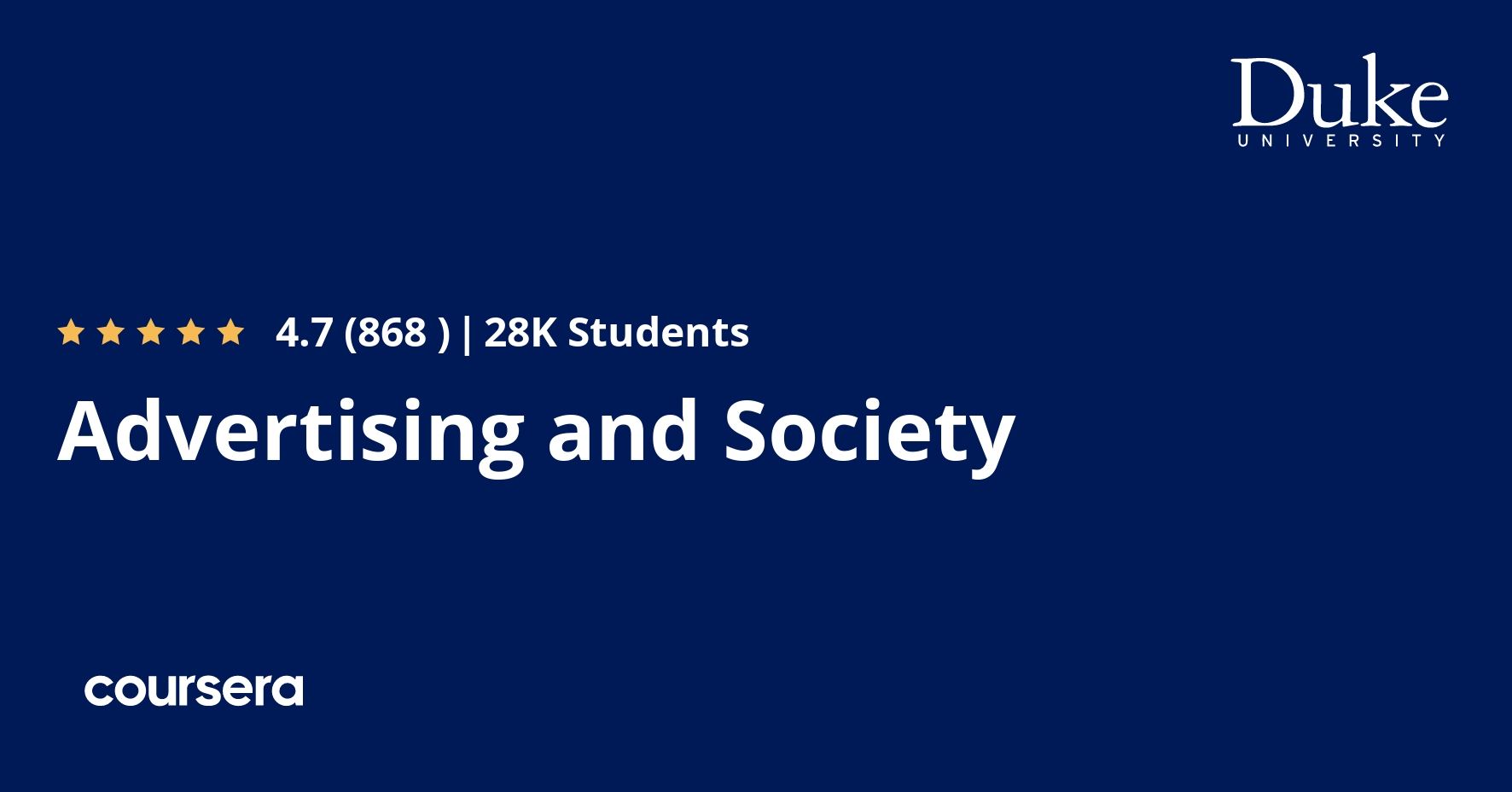Description
This course examines the relation of advertising to society, culture, history, and the economy. Using contemporary theories about visual communications, we learn to analyze the complex levels of meaning in both print advertisements and television commercials.
About the Course
The course covers a wide range of topics, including the origins of advertising, the creation of ads, the interpretation of ads, the depiction of race, class, gender, and sexuality in advertising, sex and selling, adverting and ethics, and the future of advertising. The lectures will discuss theoretical frameworks and apply them to specific advertisements.
Course Syllabus
Week 1: What is advertising and where did it come from?
Week 2: Am I being manipulated by advertising?
Week 3: What’s in an ad beyond that which meets the eye?
Week 4: How do ads get made?
Week 5: What do ads teach us about race, class, gender, and sexuality?
Week 6: Does sex sell?
Week 7: What is the future of advertising?
Recommended Background
No background is required; everyone is welcome!
Suggested Readings
Although the lectures are designed to be self-contained, we recommend that students refer to the free online textbook ADTextOnline.org. Other free resources will be suggested for each week’s module.
Course Format
Most videos will be lectures with instructor talking. Each lecture will be illustrated with PowerPoint slides, print advertisements, and TV commercials. The videos for each week will consist of segments that add up to about an hour. Each week will have one quiz that will appear as stand-alone homework. All resources beyond lectures will be available online to students at no charge. Most of these will be from ADTextOnline.org. Others will be visits to the sites of ad agencies in the US and abroad, open access websites that deal with course topics, and open-access journal articles.
What you will learn
What is advertising and where did it come from?
Focus on 3 definitions of advertising, one of which emphasizes its antiquity, another its modernity and connections to capitalist society, and a third that traces its evolution from face-to-face salesmanship through print, radio, TV, and now the Internet. In addition, a brief history of American advertising from its European origins through the colonial period in America when most manufactured goods were imported, to the advent of mass production in 19th century America, mass consumption (and the emergence of contemporary advertising as a means to facilitate it), to the present.
Am I being manipulated by advertising?
Focus on the public’s fascination with the idea of subliminal advertising (beginning in the 1950s) and continuing somewhat into the present. Public distrust of advertising. Review of the evidence (pro and con) concerning subliminal advertising. Discussion of ethics and advertising, the role of the FTC and various self-policing industry boards that aim to control deceptive advertising.
What’s in an ad beyond that which meets the eye?
This week considers how we understand the meaning of an ad. It considers the problem of author intentionality (largely available to us in the process of understanding ads) and argues that the audience for the ad is perhaps the most important author of its meaning. Borrowing from the field of art history, it discusses interpretative strategies of various sorts.
How do ads get made?
Switching gears this week from looking from outside advertising at it, this week is devoted to the “insider” perspective on the making of ads. It looks at the various functional divisions of ad agencies (management, creative, research, and media) and the roles they play in producing an ad. It tracks the production of an ad from development of a strategy with a client company, the development of creative concepts, the production of ads, optional audience testing, and finally placement in appropriate media. Also discussed: brands and brand management strategies.





